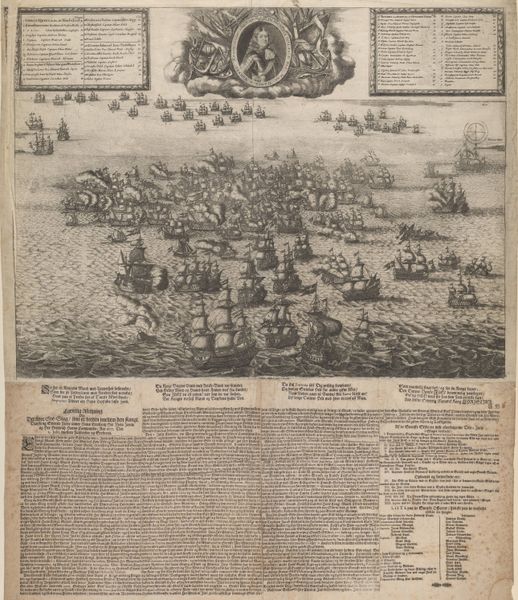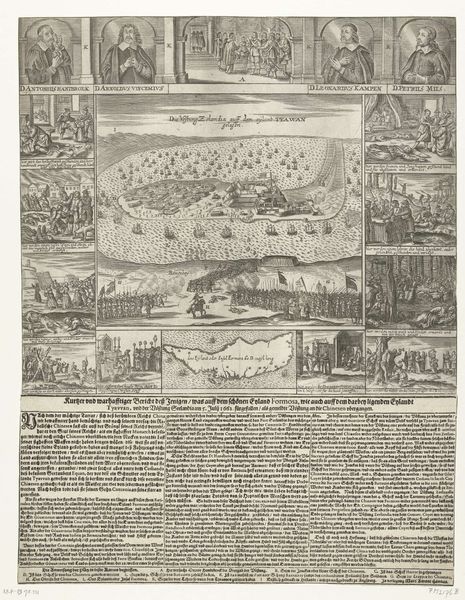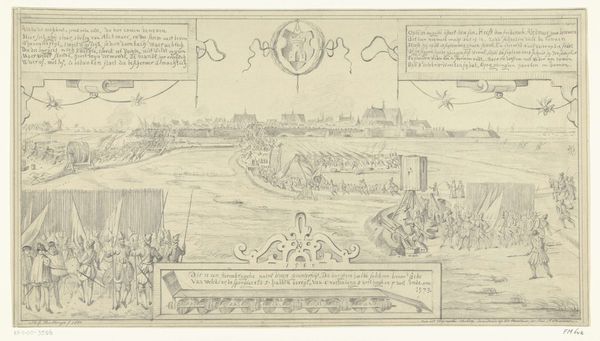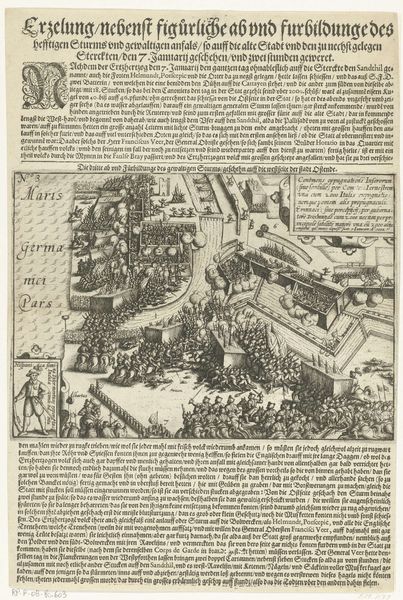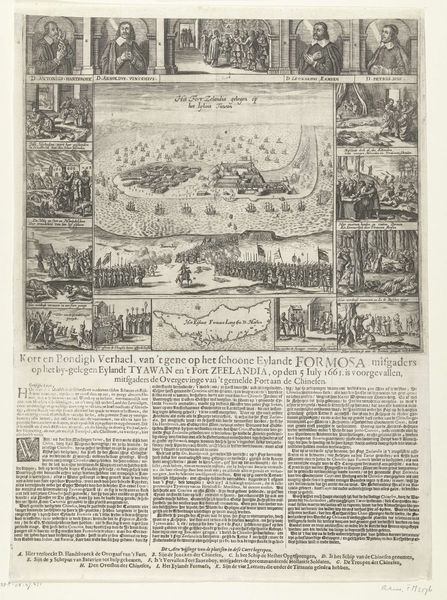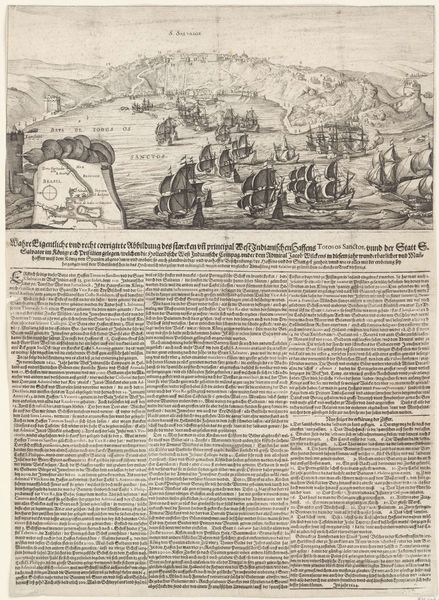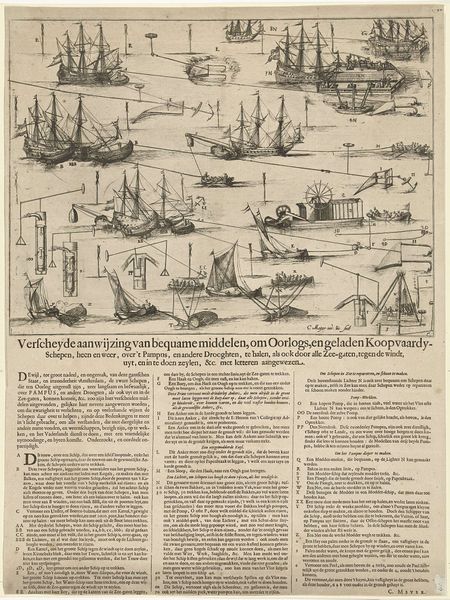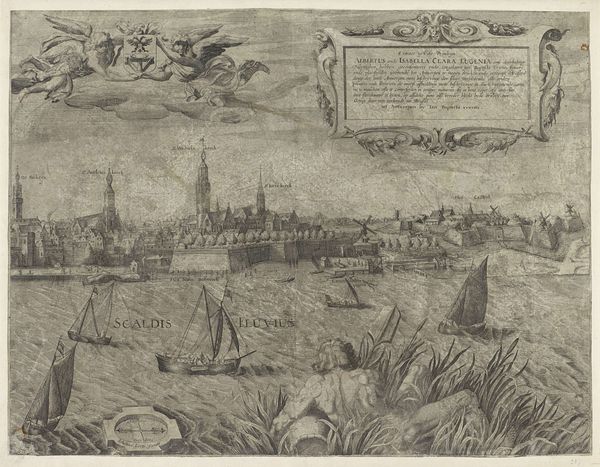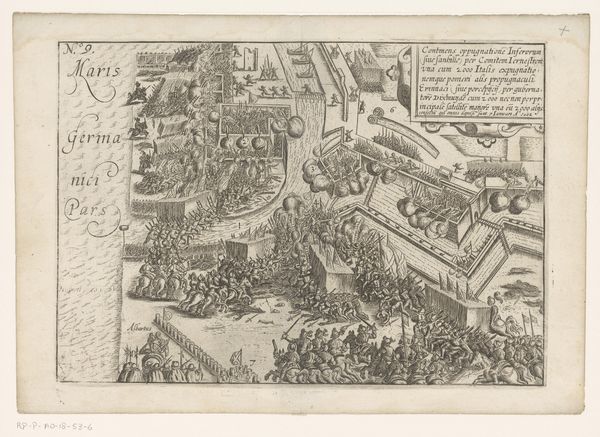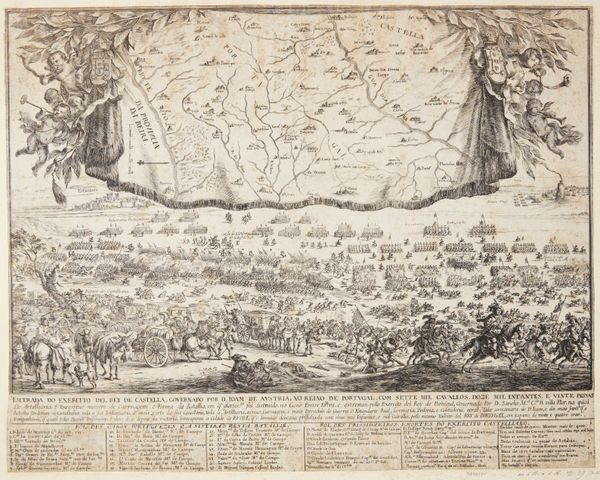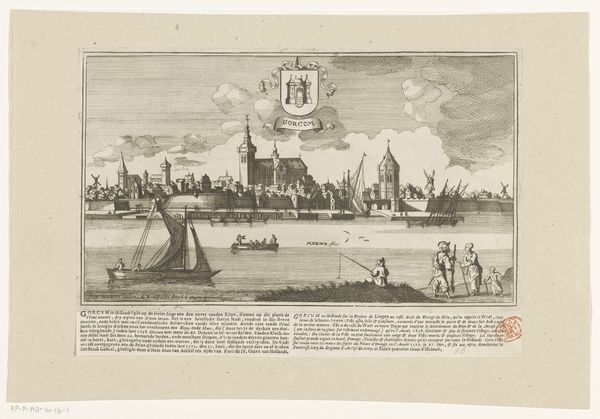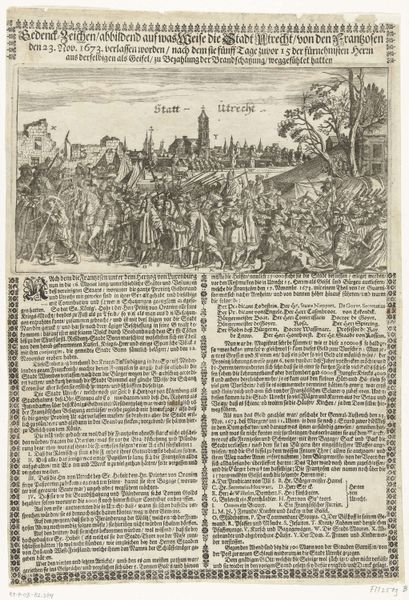
print, engraving
#
baroque
# print
#
landscape
#
cityscape
#
history-painting
#
engraving
Dimensions: height 319 mm, width 285 mm
Copyright: Rijks Museum: Open Domain
Editor: This engraving, titled "Beschieting van Maastricht door de Fransen, 1673" or "Bombardment of Maastricht by the French, 1673," is dated from, well, 1673. It appears to be by an anonymous artist. The print really overwhelms me, like looking at a medieval tapestry – the cityscape, the armies…it’s all so meticulously rendered, but very busy! What do you see in this piece? Curator: It's fascinating how this image functions as both a historical document and a piece of political propaganda. Consider the context: this print likely circulated widely after the event, shaping public opinion on the Franco-Dutch War. Notice the prominent depiction of Louis XIV, King of France, in the upper part. How do you think this portrait affects the viewer's understanding of the event? Editor: It’s like he's taking credit! Making it seem grand and glorious, not… destructive. A bit of spin. Curator: Precisely! These images played a crucial role in constructing narratives around military events. Beyond the explicit depiction of the siege, what unspoken political messages are being communicated? Think about the text included within the frame. Editor: The borders are practically overflowing with it! It gives the whole thing a propagandistic, maybe even a nationalistic flavor, since there appears to be anti-French text alongside pro-Dutch text. A call to arms, or to prayer, depending where this artwork was found! Curator: Indeed. Prints like this served a vital function, stirring up feelings of patriotism, fear, and ultimately shaping how events like sieges were remembered and understood by future generations. What have we gleaned from considering that angle? Editor: I never really thought about art as straight-up reporting before. But you’re right; the artist’s decisions definitely influence the story they’re telling! So, history *is* in the eye of the beholder…or engraver, in this case.
Comments
No comments
Be the first to comment and join the conversation on the ultimate creative platform.
